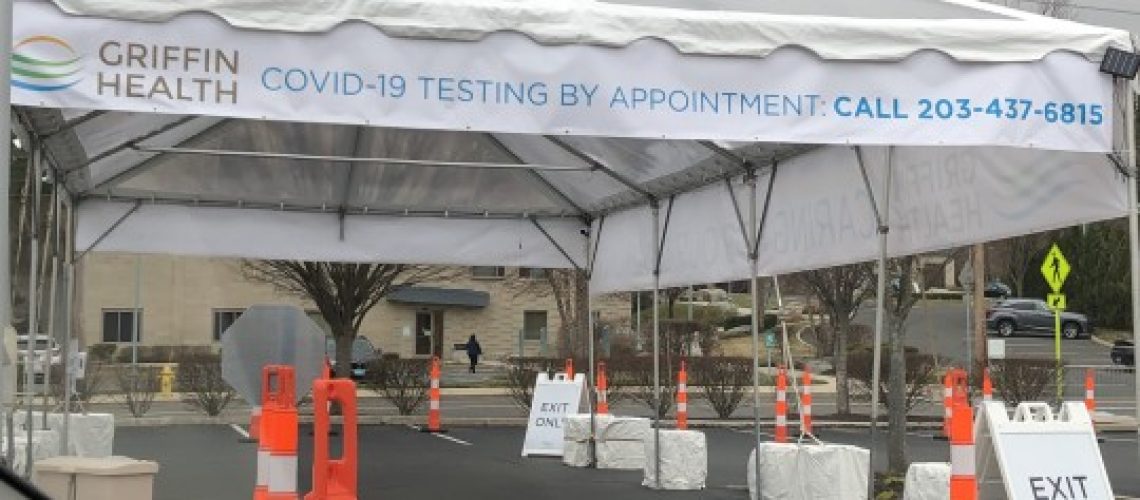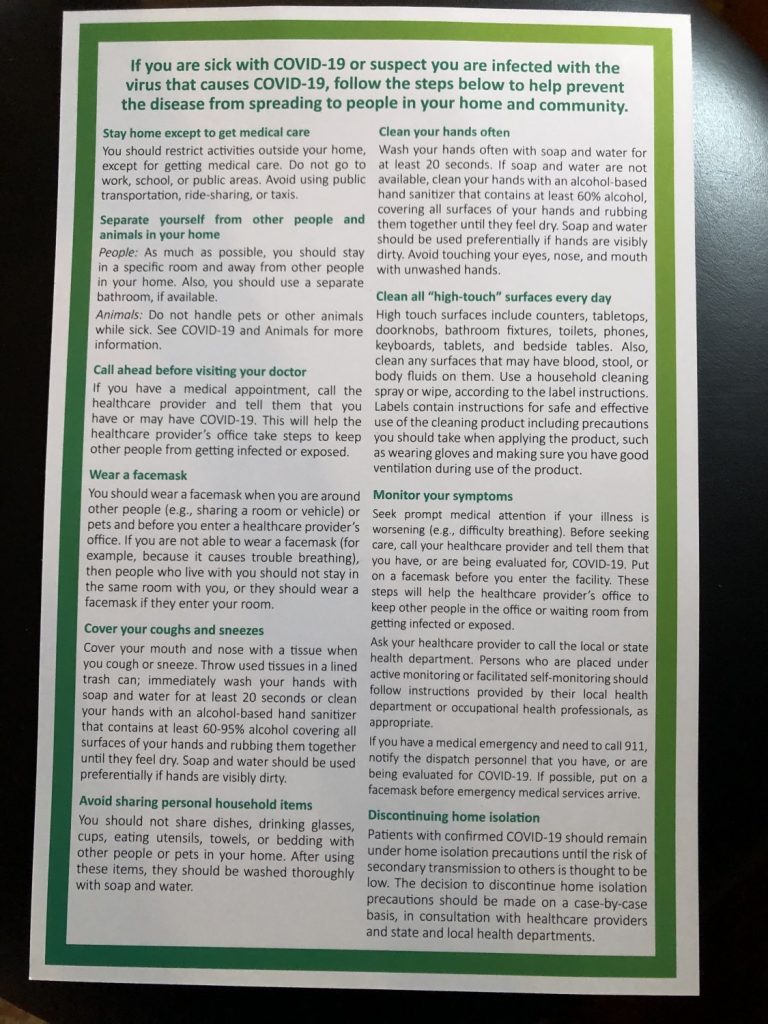Home » Coronavirus – of Risk and Ruin, Ideas and Hope
Coronavirus – of Risk and Ruin, Ideas and Hope

In the interim, I very much suspect I have coronavirus- today I feel moderately sick- and frankly, hope I do. If I am this sick with something else while still vulnerable to getting coronavirus, too- then I am in real trouble!
If I do have COVID19, it is for the very reasons I have been writing about since before the pandemic reached our shores: lack of advance preparation, lack of risk stratification, and lack of policies predicated on risk differentials. What I mean is this: my most likely exposure is from my adult children sent back to the family home when (A) universities closed down, and (B) businesses closed down and laid people off. I am not saying these things didn’t need to happen- but they needed to happen with some careful consideration of risk tiers.
One of my daughters was working in a now closed restaurant in New York City, now declared the American epicenter of the contagion. She is a very healthy young woman (in fact, ran the 2019 NYC Marathon)- and thus is in a group that appears to be at very, very low risk of severe coronavirus infection. I, however, am a 57-year-old man. I’m not in a high-risk group, but the global data certainly suggest my risk of severe infection to be much higher than my daughter’s.
Fortunately, in my case, my prior health was excellent- that’s my job, after all- health promotion. I practice what I preach. But I am very concerned about my contemporaries around the country- the many hundreds of thousands of late 40-something, 50-something, or early 60-something parents who are not in perfect health, and some far from it, now huddling at home with adult children sent home, infectious status unknown, from the large populations of universities, and in many cases, big cities. I am all the more concerned about those households with yet another generation under that roof, namely the grandparents of those young adults.
We were badly prepared for this pandemic, despite public health experts -me among them- shouting about it for years, begging for preparation- going ignored. If anything, those of us advocating for public health have suffered a blistering assault by the anti-vaccine crowd. I have written about this innumerable times over the years, and of course- no one paid much attention.
Hence, my worry at the start of this that an approach not focused on risk tiers would spread our very limited resources far too thin to protect anyone reliably. Elderly people, with no clear guidance, were gathering in NYC’s Central Park with younger people as of yesterday. They are likely getting exposed to an infection they- the older people- really cannot afford to get. It looks thus far like most of the healthy, young people passing it to them probably can “afford” to get it, because it is overwhelmingly likely to be mild in them- although we need more data to know for sure. Which reminds me: my test result will take too long!
I have been suggesting from the start that- given how ominously ill-prepared we have let ourselves be- that we must think through targeting the resources we do have to those who most need protection. Evidence from other countries with much better data than we have so far shows that to be: the elderly, and those with chronic disease like heart disease and/or diabetes, and those with significant immunocompromise.
What we can do now is gather and assess data from the US experience, and determine if a pivot to a more risk-based concentration of protections can be carried out. The goal is better protection, not less, for those most in need. To me, the prospect looks promising.
As for the economy- it simply can’t be unbundled from public health; this is what the vitally important “social determinants of health” is all about. It is a major reason, even the major reason, why some people are healthy and others are not. As my colleagues focusing their entire careers on this matter have said: your zip code may say much more about your prospects for health than your genetic code.
Many people in this country are financially marginal, living pay check to pay check. They are now subject to true destitution, desperation, ruin, food insecurity, hunger, and the fallout from that: addiction, domestic violence, suicide. Colleagues and I looking at all that don’t know if the deaths from coronavirus will be less, or more, than the deaths resulting from societal collapse. Does anyone want to argue that deaths and misery resulting indirectly from this pandemic are less important than those resulting directly from it?
Every argument I’ve made is predicated on this simple idea: there is more than one way to lose or ruin a life, devastate a family- and any of them is bad. Preventing any of them is good. Our goal as a society should be to use the best data we can amass, to inform the best policies we can devise, to minimize total harm. Our job is to save the most people, and families, possible from every variant on the theme of calamitous ruin and loss. Some of this can be done with federal financial support; but much of it cannot.
I am getting emails from vulnerable people with chronic conditions who really don’t know what to do now that their young adult children are back home. Can anyone leave the house? How do they handle grocery shopping? We need hotlines to deal with such matters, and we need them now, before all of those most vulnerable to severe infection wind up needing a hospital bed.
Our only immediate option is the best population-wide containment and interdiction we can manage. So to be perfectly clear, we must all now abide by all the rules to the very best of our ability: social distancing, shelter in place as advised. There can be no rush from these policies and practices until there is a fully developed, reliably better next phase ready for implementation.
Accordingly, while social distancing and attempting to interrupt viral transmission, we can gather and analyze data regarding variation in risk. Coronavirus risk differentials, and policies predicated on them, could offer the promise of much better, more dedicated protections of those most in need; less risk of overwhelming the medical systems around the country as a result; a path to more proximal crisis resolution via herd immunity; and more than one way to save a life.
I also think it would be enormously reassuring to people like my 80-year-old mother, who is somewhat afraid of getting coronavirus and dying, but even more afraid of dying of some other cause over an indefinite period of time in isolation before ever again being able to hug her grandchildren- to know that there is a plan in place. Or, at least, planning for a plan.
I think authorities could align and announce now a commitment to both immediate interdiction efforts that are on-going, and data analysis. That data analysis will inform a major public update “on or by SOME DATE” a week, or two, or three away. It would give people a lot of hope to know there are policies in the works, and a proximal timeline for hearing about them, that address prospects for restoring any semblance of life as we knew it before the pandemic disfigured it all. Actual dates should not be arbitrary, and should be based on progress. But I think there should be announcements now about announcements to come, and work on a phased sequence of policies- including some clear thinking about what will suffice as the “all clear,” first for some, and ultimately, for all.
We need to be thinking about more than one way to save lives, because there is more than one way to ruin and lose them. Any of them is bad, preventing any is good. Our objective must always be to use data to inform policy aimed at total harm minimization.
Disagreeing with one another’s ideas is something reasonable people do. Running ideas through a gauntlet of disagreement is, in my view, the best way to ensure that only worthy ideas survive. But we live in a post-truth era our president has effectively institutionalized where every idea is dumbed down, and messed up- before ever getting cautious consideration.
Disagreeing with mangled distortions of one another’s ideas is where all ideas- good and bad- go to die.
It’s not too late for us to think carefully through policy options informed by the best data we can gather, and all we know and learn about the various risks in play. It’s not too late to acknowledge that we want barricades on every route that leads to health and lives lost, health and lives destroyed. It’s not too late for common cause, common ground, common effort, common good, and shared hope. We can practice social distancing- and still, all, be in this together.
-fin
This article was first published at LinkedIn.




